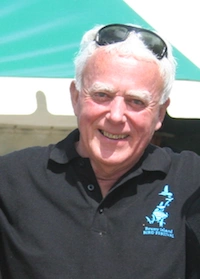When the waves come in, there is an enormous amount of energy. It loses some energy to heat as it comes in. As it loses that energy, it will start to drop the courser particles of sand and as it sweeps up the beach, it is dropping the finer particles. And that’s why you get this gradation of fine particles of sand at the top of the beach, to courser particles of sand at the waterline. At the top of the dune, the sand is very fine – because it is all wind driven.
When you get water covering an area that has normal soils on it, it will start to sort itself, and the sand particles separate out and they remain behind. You can do it with the kids at home, get a handful of soil – wash it away – the mud – tiny particles wash away first and then the particles get bigger - finally you get sand. And then you get the waves coming and wash it away clean. If you dropped a bucket of mud on the beach it won’t be there tomorrow – but the sand will. Because sand is actually quite coarse particles.
Fascinating things these beaches – they’re alive!

Fascinating things these beaches – they’re alive! - Bob Graham

Bob Graham
When the waves come in, there is an enormous amount of energy. It loses some energy to heat as it comes in. As it loses that energy, it will start to drop the courser particles of sand and as it sweeps up the beach, it is dropping the finer particles. And that’s why you get this gradation of fine particles of sand at the top of the beach, to courser particles of sand at the waterline. At the top of the dune, the sand is very fine – because it is all wind driven.
When you get water covering an area that has normal soils on it, it will start to sort itself, and the sand particles separate out and they remain behind. You can do it with the kids at home, get a handful of soil – wash it away – the mud – tiny particles wash away first and then the particles get bigger - finally you get sand. And then you get the waves coming and wash it away clean. If you dropped a bucket of mud on the beach it won’t be there tomorrow – but the sand will. Because sand is actually quite coarse particles.
Fascinating things these beaches – they’re alive!

Fascinating things these beaches – they’re alive! - Bob Graham
You might like...

Bruny - two islands joined by a Tombolo?

Contrasting beaches at the Neck

Geological History of Bruny Island

Ecology of the Neck
Newsletter
Sign up to keep in touch with articles, updates, events or news from Kuno, your platform for nature
